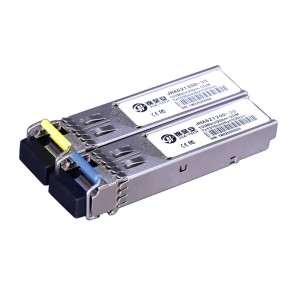Nowadays, with the advent of 5G technology, many applications of network technology in our daily life have also undergone tremendous changes. So, the applications of optical modules that are often used in industry have changed from short-distance to short-distance applications with the development of networks. The long distance has gradually matured.
1. The concept of long-distance optical modules:
Transmission distance is one of the important factors of optical modules. Optical modules are divided into short-distance optical modules, medium-distance optical modules, and long-distance optical modules. A long-distance optical module is an optical module with a transmission distance of more than 30km. In the actual use of a long-distance optical module, the maximum transmission distance of the module cannot be reached in many cases. This is because the optical signal will appear in the transmission process of the optical fiber. In order to solve this problem, the long-distance optical module adopts only one dominant wavelength and uses a DFB laser as the light source, thus avoiding the problem of dispersion.
2. Types of long-distance optical modules:
There are some long-distance optical modules among SFP optical modules, SFP+ optical modules, XFP optical modules, 40G optical modules, 40G optical modules, and 100G optical modules. Among them, the long-distance SFP+ optical module uses EML laser components and photodetector components. Various improvements have reduced the power consumption of the optical module and improved the accuracy; The long-distance 40G optical module uses a driver and a modulation unit in the transmitting link, and the receiving link uses an optical amplifier and a photoelectric conversion unit, which can achieve a maximum transmission distance of 80km, which is far greater than the optical transmission distance of the existing standard 40G pluggable optical module .
3.the application of long-distance optical modules:
a.Ports of industrial switches
b.Server port
c.The port of the network card
d.The field of security monitoring
e.Telecom field, including data control center, computer room, etc.
f.Ethernet (Ethernet), Fibre Channel (FC), Synchronous Digital Hierarchy (SDH), Synchronous Optical Network (SONET) and other fields.
4. Precautions for using long-distance optical modules:
Long-distance optical modules have strict requirements on the receiving optical power range. If the optical power exceeds the receiving sensitivity range, the optical module will malfunction. The usage and precautions are as follows:
a. Do not connect the jumper immediately after installing the above long-distance optical module to the device, first use the command line display transceiver diagnosis.
The interface reads the received light power of the optical module to check whether the light power is within the normal range. The received light power is not an abnormal value such as +1dB. When the optical fiber is not connected, the software usually displays that the received light power may be -40dB or a relatively low value.
b If possible, you can use an optical power meter to test that the received and emitted power is within the normal receiving range before connecting the optical fiber to the above-mentioned long-distance optical module.
c. Under no circumstances should the optical fiber be directly looped to test the above-mentioned long-distance optical modules. If necessary, an optical attenuator must be connected to make the received optical power within the receiving range before the loopback test can be performed.
f. When using a long-distance optical module, the received power must have a certain margin. The actual received power is reserved for more than 3dB compared with the receiving sensitivity. If it does not meet the requirements, an attenuator must be added.
g. Long-distance optical modules can be used in 10km transmission applications without attenuation. Generally, modules above 40km will have attenuation and cannot be directly connected, otherwise it is easy to burn out ROSA.
Post time: Mar-17-2021






